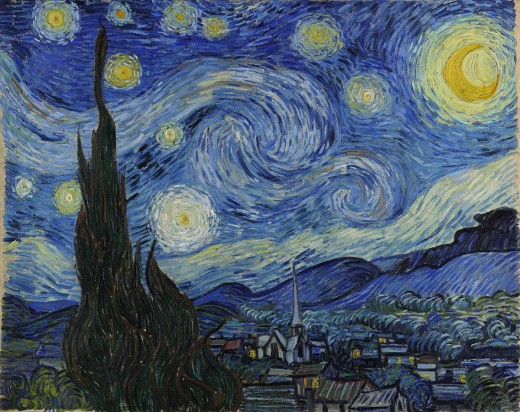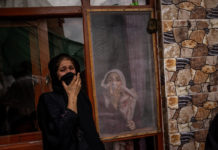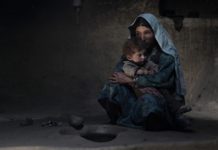Vincent Van Gogh painted the Starry Night on June 19, 1889. The night sky brushed by van Gogh in the Starry Night forms a myriad of spinning clouds, sparkling stars, and a brilliant moon.
It portrays a small town as seen from the window of Van Gogh’s room at saint-Paul-de-Mausole(asylum), contrasted with a vast blue night sky full of gloomy stars. His expressionism is evident in his creation of a unique view of reality with influences from poetry, personal religious conflict, depression and astronomy.
The sky gives a feeling as if it were moving; this is owed to the prodigious wavy lines. The Starry Night was oil on canvas painting made in the post-expressionist era, Van Gogh being on of the leaders of the movement.
There are many interpretations of the Starry Night, the reason for the creation of the masterpiece might only be known to the artist himself but some symbolic themes are evident, the artists struggle with depression and mental ailments, it was painted from memory during emotionally unstable times.
Van Gogh had shown his peculiar interest in the idea of a starry night, which he talks about in his correspondence with his brother, Theo. Short brush strokes are synonymous with the author transferring his emotions onto the campus, the piece’s creation from memory shows the deeper perceptive understanding of reality that Van Gogh had.
Although at first glance, the art piece appears to be hallucinating and the supernatural however keen observation reveals a deeper symbolism, in which the artist’s worldview is amalgamated into the masterpiece. Van Gogh conveys his emotions through the contoured forms, of his health condition his quest for its improvement, fight against illness is reflected in the murkiness of night sky. The sky, the clouds, the stars, they all seem to be moving, giving a flow to the expression of the artist’s emotions.
Van Gogh brilliantly uses several elements of design to create a magnificent depiction of a starry night from his imagination. The lines are organic and have a wave pattern, which illustrates swirling wind, rolling hills and the perplexing texture of the sky.
He has used short brush strokes, consistent with his style, to produce spirals of clouds, swirling the wind and the cypress bush; this creates a deep sense of a stirring feeling and depth, creating a peculiar aura.
The dim night sky is juxtaposed with bright stars and moon creating an exceptional combination between dazzling stars and a peaceful village, perhaps depicting life and death, this amalgamation of peace and chaos gives and intense emotional ambience to the piece.
Van Gogh used impasto, ie, sticking thick layers of oil paint to the canvas leaving behind rich texture of short brush strokes, the prodigiously rich feeling, depth and structure is owed to this particular method the artists used.
Shades of blue and their combination with the white and cream yellow makes a beautiful flow due to curved lines creating marvellous spirals, the coolness of blue is offset by bright orange inside the glowing stars and the moon, use of this element strikingly directs attention to the awe-inspiring night sky.
Positive and negative space in the piece is splendidly utilized, the symbolic cypress bush, the village and the hills collectively form the negative space while the night sky, the stars and the moon compose the positive space however one atypical anomaly exists in the form of the cypress bush which begins in the negative space but is majorly dominating the positive space as well, this diffusion of a negative space element into positive space creates an ineffable flow and unification between the two spaces.
The picture plane is ever so beautifully composed of the cypress bush and the luminous moon. The bush is an extraordinary eye point, taking the unconscious focus of the viewer, picturesque spirals direct focus all the way to the moon, which provides an exquisite vanishing point.
The Starry night hold within itself an inexplicable solace, a chaotic harmony indeed, this is achieved by a pattern of curving lines in the sky and swirling brush strokes in the clouds, this gives a feeling of movement within the picture to the viewer. A strong consistent wave pattern can be discerned; the major motif of the piece is indeed the flow of curved lines, this pattern of waves and the rhythm of swirling clouds.
This is achieved by short curved brush strokes that leave a rich texture behind, the curves are guiding, shifting focus from the eye point towards the vanishing point with great fluidity. These curved strokes perhaps depict the artist’s emotions flowing onto the canvas; the peculiar strokes create a strong feeling of movement, evident even in the rolling hills.
Van Gogh beautifully uses variety in this particular piece; the cypress bush is unusually large, taller than the cathedral in the village. Gogh also defies many other principles; the rolling hills are another example of variation.
The use of disproportionate sizes and the unusual spiral design for the clouds instils a strong sense of diversity. This is further enhanced by unique colour choice, bright orange inside of the stars and the moon.
There is a beautiful balance in the art piece however it is not symmetrical, rather asymmetrical, utilising elements to balance along both the horizontal and the vertical axis. Across the horizontal axis, the peaceful village and darker colours in the village below offset the dim rich night sky, with raging stars and swirling clouds in the top part.
The asymmetrical balance across the vertical axis is obtained through the oddly huge cypress bush which is dark and has a curving wave-like pattern in its bushes, placed in the left part, is juxtaposed against the brightly shining moon in the right part. There is also radial balance visible in the elements of the night sky, the stars, the swirling clouds and the moon.
The Starry Night is a brilliant artistic endeavour; it depicts several themes in a carefully composed and contrasted picture.
The artist’s struggle with depression, personal religious conflict, his deeper psychological conflicts is symbolically reflecting the elements of the night sky, the cypress bush and the unusually small cathedral.
Van Gogh’s struggle with mental ailments such as depression, anxiety, dissociation and his astronomical obsession results in a beautiful diffusion of his subjective reality into the frame of night sky he could see from his asylum room. Depression and hopelessness take great focus in the form of the mourning symbol that is the cypress bush against the bright lively moon. His imagination scores the magnificent consolidation of conflicting entities; such as peace and chaos, the night sky and the village, life and death, the moon and the prodigious cypress bush, swirling clouds and the curving short brush strokes, achieve these depictions in a feeling of movement within the painting.








